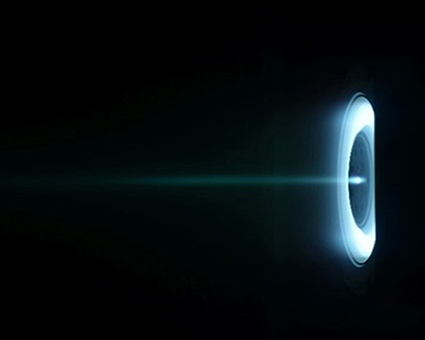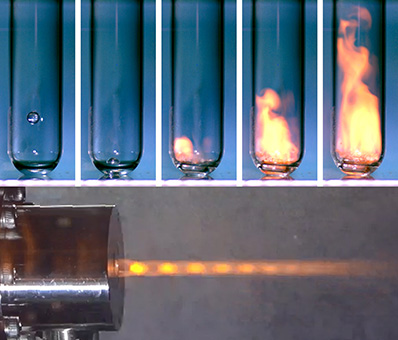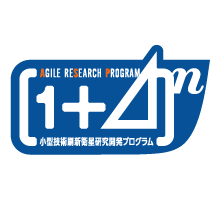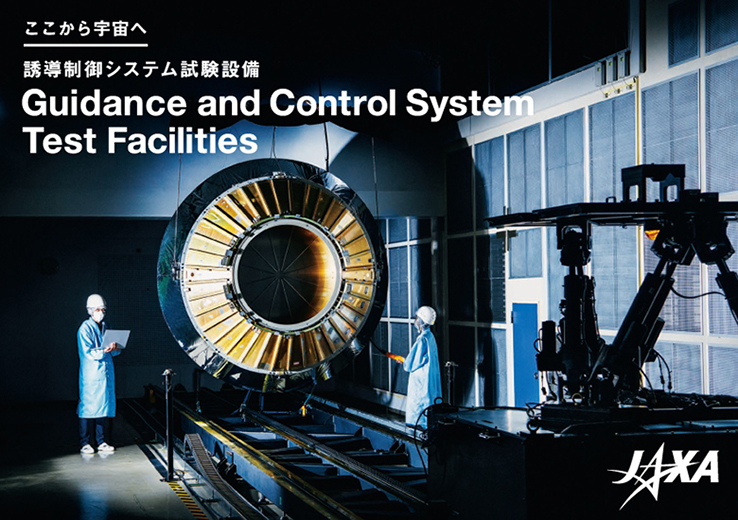The Value of Our Research
In-space propulsion systems are indispensable for "moving" in space, and they are applied to a wide variety of applications, including satellites in low Earth orbit, geostationary satellites, and probes and vehicles aiming for the Moon, Mars, and beyond. Therefore, it is important to build a strategy on how to research, develop, and commercialize the appropriate propulsion systems for various applications, and to enhance the technological capabilities for realizing the strategies.
Research goals
Strategy Building
This activity will provide direction for research, development, and utilization of in-space propulsion by overviewing the wide variety of propulsion technologies and their applications.
Capability Enhancement
This activity will appropriately enhance the essential technologies on in-space propulsion such as Hall thrusters and some chemical thrusters required to independently carry out various space missions.


(Top: Ignition Test, Bottom: Thruster Firing Test)








